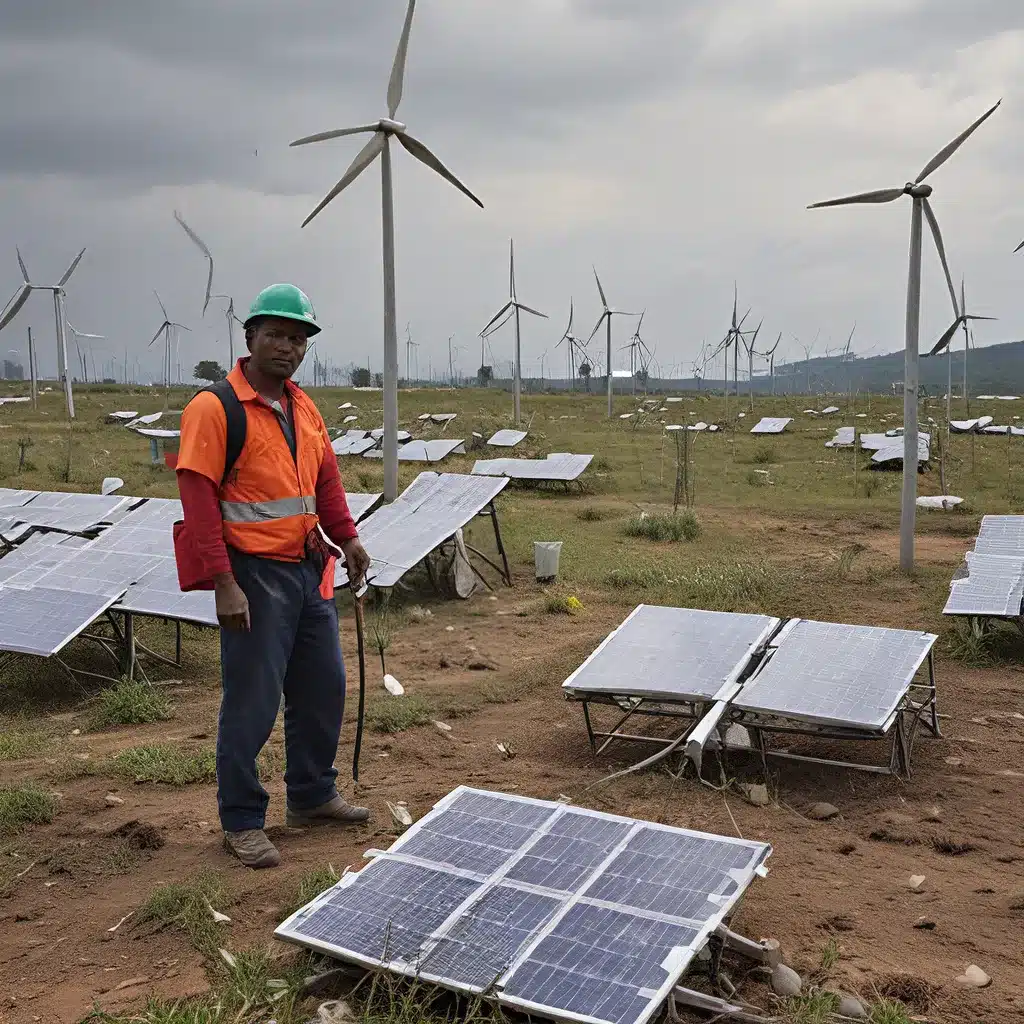
Powering Through the Storm: How Renewable Energy Can Fortify Our Communities
As I sit here, watching the news unfold with yet another devastating natural disaster, I can’t help but feel a growing sense of unease. Time and time again, our communities are being put to the test, forced to confront the harsh realities of a changing climate. But amidst the chaos, I’ve come to realize that the key to our resilience may lie in the very forces of nature that challenge us – renewable energy.
The Inflation Reduction Act, signed into law by President Biden, has marked a historic commitment to building a new clean energy economy and tackling the climate crisis. This landmark legislation has empowered the Federal Emergency Management Agency (FEMA) to provide financial assistance for low-carbon building materials and net-zero energy projects – tools that can help our communities weather the storms ahead.
Strengthening Our Foundations: The Role of Low-Carbon Materials
As our communities face the increasing threats of natural disasters, the choice of construction materials has become more critical than ever. Concrete, asphalt, glass, and steel – the very building blocks of our infrastructure – are now under the spotlight. Through the Inflation Reduction Act, FEMA is able to fund the use of these materials with lower Global Warming Potential (GWP) than industry averages, empowering states, tribes, territories, and local communities to make strategic investments in climate-resilient construction.
Imagine a future where our schools, hospitals, and emergency shelters are not just built to withstand the elements, but to actively reduce their carbon footprint. By embracing these low-carbon materials, we’re not only safeguarding our communities, but also contributing to the larger clean energy economy. It’s a win-win scenario that holds the promise of a brighter, more sustainable tomorrow.
Harnessing the Power of Net-Zero Energy
But the benefits of renewable energy don’t stop at the construction phase. FEMA’s disaster relief and recovery programs now extend to net-zero energy projects – innovative solutions that can transform the way our communities power themselves, even in the face of crisis.
Imagine a community center that not only serves as a critical hub during emergencies, but also generates its own clean, renewable energy. Or a hospital that can maintain essential functions, even when the grid goes down. These net-zero energy projects, funded through programs like FEMA’s Hazard Mitigation Grant Program and Building Resilient Infrastructure and Communities, are poised to revolutionize the way we approach disaster preparedness.
Fostering Community Resilience
As I delve deeper into this topic, I’m struck by the interconnected nature of renewable energy and community resilience. It’s not just about the technology or the funding – it’s about empowering our communities to take control of their own futures.
The National League of Cities’ recent Congressional City Conference highlighted the vital role of community engagement and inclusive decision-making processes in driving sustainable solutions. Municipal leaders from across the country shared their experiences, challenges, and triumphs, underscoring the importance of collaborative approaches to enhancing community resilience.
Through initiatives like the Justice40 program, which aims to ensure fair distribution of resources and opportunities, we’re seeing a renewed commitment to addressing the unique needs of disadvantaged communities. It’s about more than just building infrastructure – it’s about empowering people and fostering a sense of ownership and pride in their resilient, sustainable future.
Innovation and Collaboration: Keys to a Resilient Tomorrow
As I sit here, pondering the road ahead, I’m filled with a sense of cautious optimism. The path to a resilient, renewable-powered future is not without its challenges, but I’m inspired by the innovations and collaborations that are emerging to tackle them.
Researchers and experts are exploring new frontiers, pushing the boundaries of what’s possible in renewable energy and disaster preparedness. And through initiatives like the Firewinder platform, communities are connecting with the resources and support they need to make their resilience dreams a reality.
It’s a future where our power grids are fortified, our buildings are designed to withstand the elements, and our communities are empowered to face any challenge that comes their way. And at the heart of it all, renewable energy stands as a beacon of hope, guiding us towards a more sustainable, resilient tomorrow.
So, let’s roll up our sleeves and get to work. The storm clouds may be gathering, but with the right tools and the collective will of our communities, we can weather any challenge that comes our way. After all, resilience is not just a destination – it’s a journey, and one that I’m excited to embark on with all of you.

